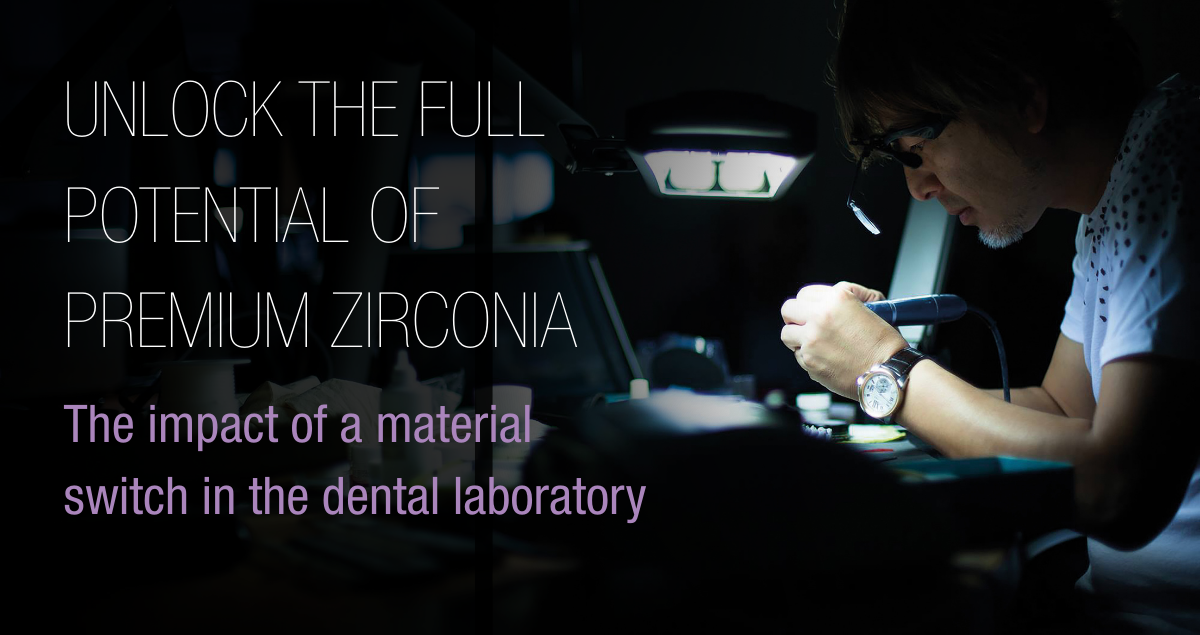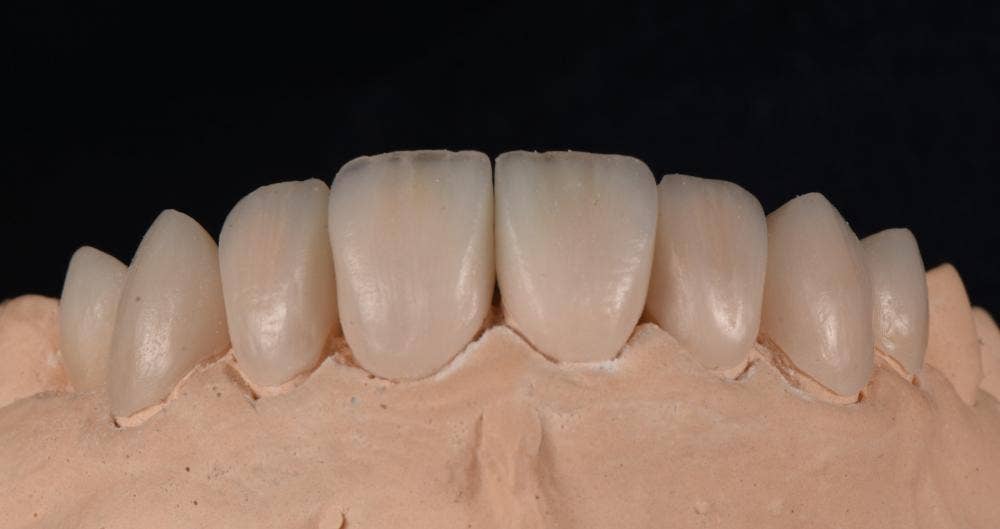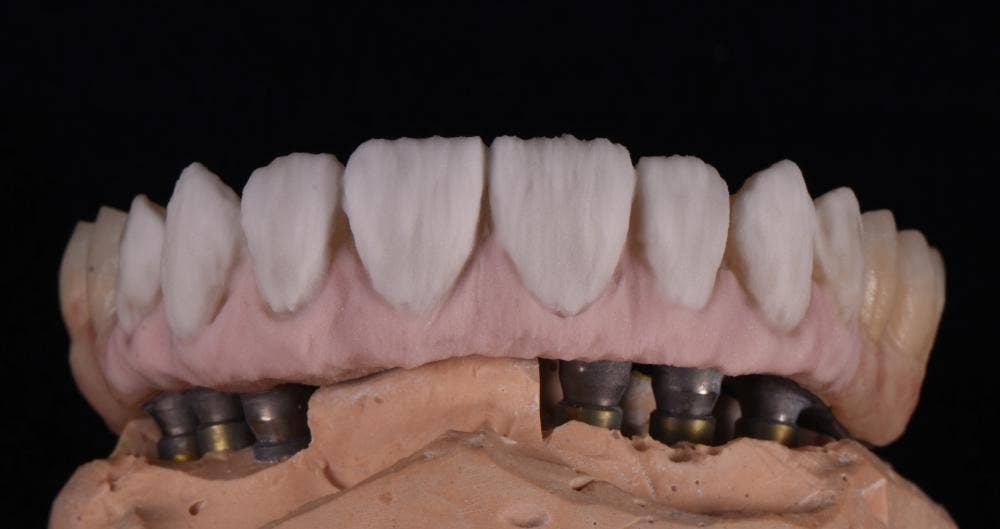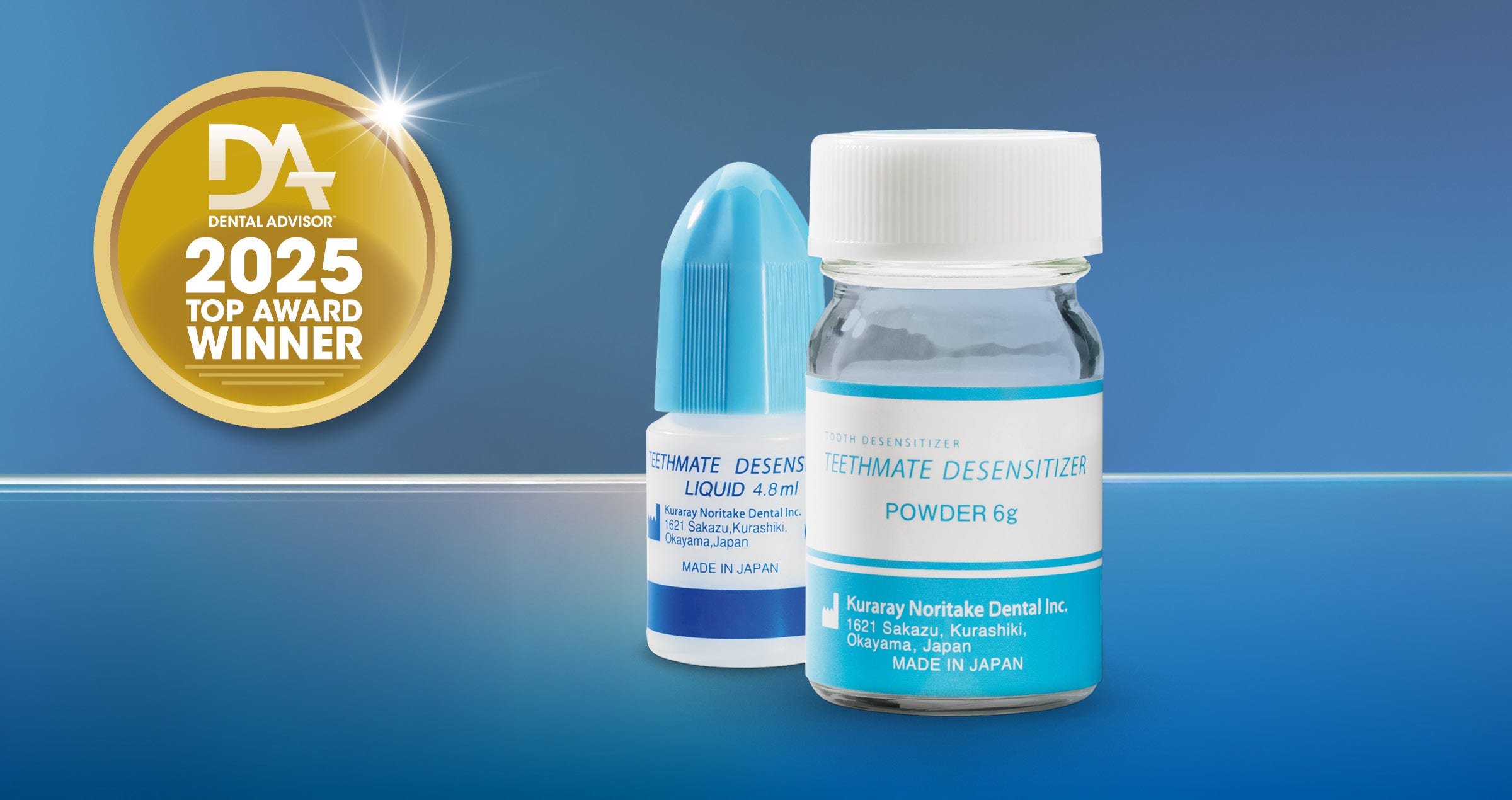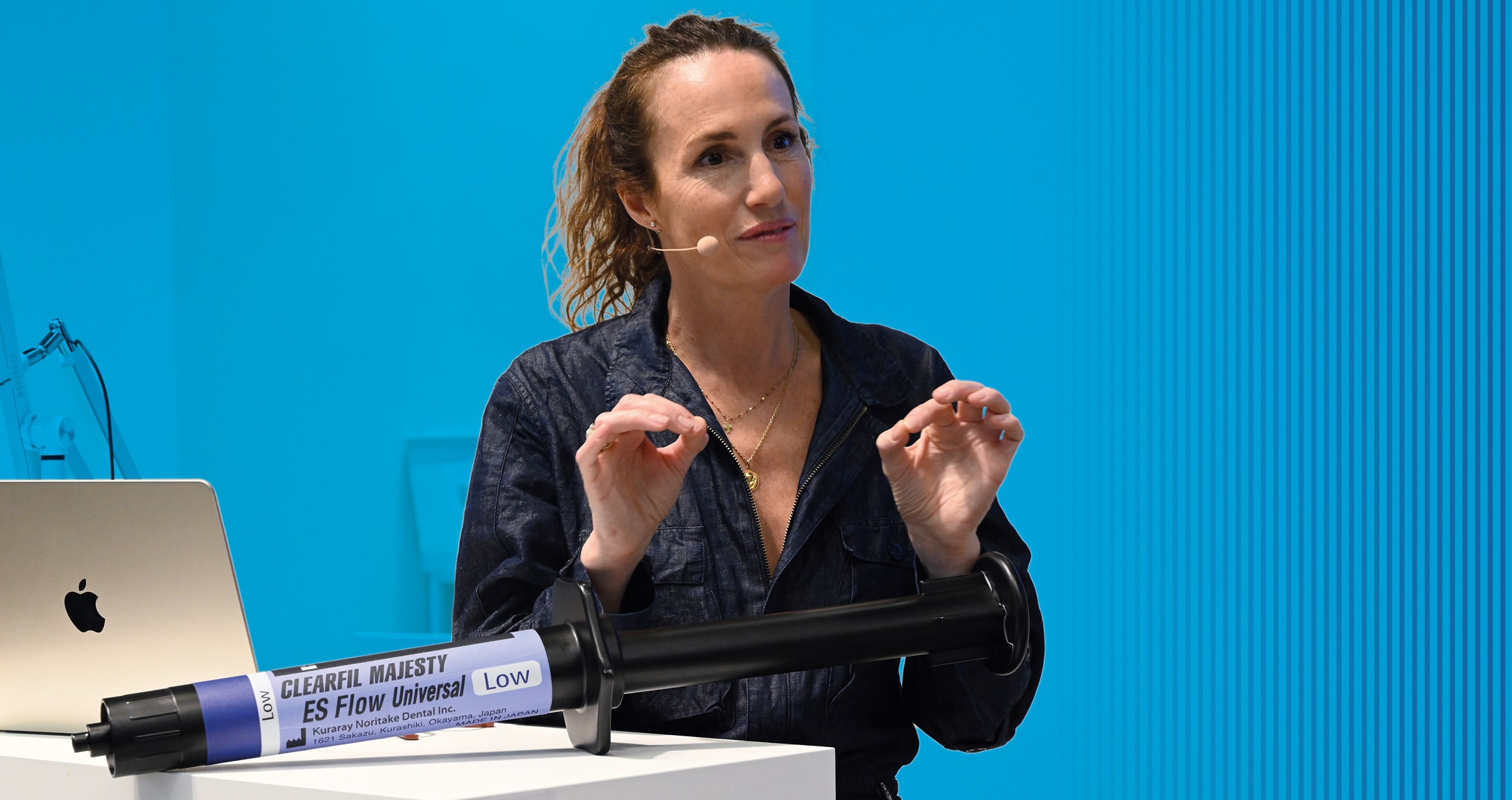Unlock the full potential of premium zirconia
The impact of a material switch in the dental laboratory
Switching to a different type of zirconium is not something you do lightly. Was the leap to KATANA™ Zirconia worth it? Three dental lab owners share their experience!
Not all zirconium oxide materials are created equal. Dental technicians worldwide recognise that zirconium oxide discs vary significantly in quality depending on their composition and manufacturing process. The most noticeable differences lie in their mechanical and optical properties, both of which are determined during production. At first glance, zirconium oxide products from leading manufacturers may seem similar. However, —sometimes invisible—differences can exist. Achieving the highest quality requires the use of premium raw materials, advanced cleaning and pressing techniques, and precise pre-sintering methods. These factors help ensure superior results while minimizing the risk of remakes. Selecting a high-quality zirconium oxide product is crucial, particularly when working with complex structures or specialised processing techniques. The right choice can significantly impact the final outcome and durability of dental restorations.
We had a conversation with three decision makers of Norwegian dental laboratories to learn more about their reasons to switch to the KATANA™ Zirconia Multi Layered Series (Kuraray Noritake Dental Inc.) and their path to success with these materials. Espen Rørstad is the owner and general manager of Vestfold Dental in Tønsberg, Lucas Andvik the general manager of Cicero Dental AS in Trondheim and Hilsen Egil Berg the general manager of dental technology at Berg Dental in Askim. They are happy to share their experience and practical tips and tricks.
Time for change
The reasons to start testing alternative zirconium oxide materials were different: Espen Rørstad, who has been a dental technician for 24 years, was looking for improvements in strength and aesthetics: “Nowadays, zirconium materials are evolving quickly, and specifically those blanks with multi-layered colour, translucency and flexural strength attracted my attention. I first tested a material from another leading manufacturer. Then, I received a single disc of KATANA™ Zirconia YML. I was immediately impressed by the homogeneous, densely pressed material and its optical properties. Ever since my first trial case with KATANA™ YML, I have not used any other zirconium oxide again.”
| Espen Rørstad | Lucas Andvik | Hilsen Egil Berg |
| is the owner and general manager of Vestfold Dental in Tønsberg |
is the general manager of Cicero Dental AS in Trondheim |
is the general manager of dental technology at Berg Dental in Askim |
Choosing the right material
Hilsen Egil Berg uses KATANA™ Zirconia YML for most indications, and KATANA™ Zirconia HTML Plus for large reconstructions of ten or more units. The design is predominantly monolithic with a small (vestibular) cutback. The approach of Espen Rørstad is similar. He also uses KATANA™ Zirconia YML on a regular basis for reconstructions with up to ten units, even on implants in combination with Ti-bases. “For larger-span restorations, I most frequently opt for KATANA™ Zirconia HTML Plus or, occasionally KATANA™ Zirconia HT combined with a traditional layering approach”. Lucas Andvik uses all four types of multi-layered zirconia from Kuraray Noritake Dental Inc. (KATANA™ Zirconia UTML, STML, HTML Plus and YML) to have the best of all worlds.
Establishing workflows
Switching materials always means investing time and effort until processes run smoothly and predictably. According to Espen Rørstad, it did not take long with KATANA™ Zirconia to get the parameters right and obtain high-quality results. According to him, a factor that is critical for good outcomes with KATANA™ Zirconia YML is positioning of the restoration in the disc. “Proper positioning is key to success – long-span reconstructions are only stable if positioned according to the manufacturer’s recommendations. The learning curve is quite steep and we have no issues with fractures,” he says. Lucas Andvik slightly adjusted his production procedure to provide for great outcomes: “Initially, we tried to position our restorations in blanks of the heights we had used before, and this turned out to be quite challenging. In order to have enough space for the connectors and be able to position long-span restorations in the middle of the disc as recommended, we started utilising higher blanks. With this strategy, the initial challenges were a thing of the past.”
What makes KATANA™ Zirconia different
KATANA™ Zirconia is engineered with precision at every step of the production process, from raw powder production to disc pressing, every step is tightly controlled for consistency and quality. It’s the result of decades of expertise in ceramics and full in-house control. Every disc reflects that precision and expertise, offering you high quality zirconium oxide with outstanding features;
- Dual gradient structure (YML): A seamless transition in both translucency and strength.
- High green-state stability: Thin margins, no chipping. Fewer sprues, smoother carving, and optimal material use.
- Targeted yttria balance: Optical translucency where needed, strength where it matters, each layer is purposefully composed.
- Speed sintering: 54-minute cycles delivering consistent aesthetics and mechanical performance.
- Optimized density and CTE: Uniform density and a stable coefficient of thermal expansion in all layers ensure minimized sintering deformation and high fitting accuracy.
Easy carving
One of the practical benefits of using KATANA™ Zirconia is the fact that it is perfectly suitable for carving. Lucas Andvik states: “Carving is easier with KATANA™ Zirconia than with other materials. It is even possible to go close to the margins without increasing the fracture risk. Other materials seem to be much less dense and softer, which may result in marginal fractures. Carving is really a feature that transformed our inhouse production procedure and contributes to great outcomes.” Espen Rørstad and Hilsen Egil Berg agree that carving feels great with this material, while the former also stresses that the overall aesthetics when using the carving technique are very well received by partners from dental offices.
Mastering the sintering process for optimal results
A procedure known as a critical step in the production procedure is the sintering. Virtually every leading manufacturer of hightranslucency zirconium oxide advises users to calibrate furnaces and check the achieved temperatures on a regular basis to provide for optimal outcomes. The actual sintering protocols recommended for each material, however, are very different. Kuraray Noritake Dental Inc. offers three sintering programms valid for all four materials of the KATANA™ Zirconia Multi-Layered series: The standard sevenhour programme is available for all kinds of prostheses, while the high-speed 54-minute and 90 minute programmes are suitable for restorations with up to three units. For KATANA™ Zirconia Blocks, even18-minute sintering is possible. Lucas Andvik uses the seven-hour programme for over-night sintering of all large restorations, and speed sintering for single-tooth restorations and small bridgeworks during the day. With his new furnace, he simply adopted the recommended protocols. Espen Rørstad modified the protocols slightly for his furnace and regards speed sintering as a great option for rush cases. Hilsen Egil Berg prefers over-night sintering. He reports: “It is really important to have a high-quality, modern furnace, calibrate it regularly and follow the manufacturer’s instructions. My recommendation for everyone experiencing issues is to pay extra attention to warming up and cooling down properly. That way, you achieve the highest possible strength and aesthetics, including an absolutely smooth transition between the different layers in the blank.”
Micro-layering: A game changer for finishing
In all three dental laboratories, the integration of KATANA™ Zirconia has led to a shift towards higher-efficiency finishing approaches. Espen Rørstad reports: “The switch to KATANA™ Zirconia enabled us to increase the amount of monolithic and micro cut-back zirconium oxide restorations from around 40 to 80 percent. In the anterior area, we use a minimal vestibular cutback and micro-layering, while the restorations are purely monolithic and only minimally pre coloured in the posterior area. Classical layering is only delivered on special request.” Hilsen Egil Berg states: “We completely stopped using traditional porcelain layering approaches and prefer micro-layering instead – especially in combination with KATANA™ Zirconia YML. The aesthetic outcomes are so good that a cosmetic dentist recently called me and asked if I had used lithium disilicate instead of zirconium.” Lucas Andvik also likes to add a little bit of porcelain: “We moved away from a full cutback to micro-layering approaches, using the same porcelain system for lithium disilicate and zirconium oxide,” he says. In subgingival areas, he often just polishes the restorations for highest biocompatibility, a concept that is very well received by dental practitioners.
Happy with the results?
Hilsen Egil Berg concludes: “Once you have implemented the workflow and set all parameters, working with KATANA™ Zirconia is really great. My staff likes its handling during carving, the efficient workflows and predictable results. Although sometimes the product may be more expensive than other brands’ zirconium oxide, the total economy is a lot better: We do no longer face any issues with fractures and remakes, and due to the homogeneous material structure, the service life of our milling tools is extended, while, at the same time, the edge stability of the milled restorations is increased. The blanks are so homogeneous that I am able to sinter long-span restorations without a lateral support!”
The conclusion of Lucas Andvik is similarly good: "everyone in my laboratory working with KATANA™ Zirconia is more than satisfied. My co-founder, Katharina, has tested many different materials on behalf of notable manufacturers and has never seen anything that compares to KATANA™. All the technicians that work with KATANA™ here consider it to the most versatile and aesthetic we have ever utilized. I think that all four variants are super nice to work with. My personal recommendation is to attend one of the courses offered by Kuraray Noritake Dental Inc. The instructors are super knowledgeable and we got a completely new conception of zirconium oxide as well as practical advice that was really useful for our daily work.”
Espen Rørstad is sure that “in terms of aesthetics, KATANA™ Zirconia is the best zirconium oxide tested, and I really tested a lot in the past decades! I am happy with the material, the interaction with the Kuraray Noritake Dental team and the support offered. My team is also happy with the material, but even more important is the positive feedback of my customers: One of them requested a specific zirconium all the time, and when we switched, we did not tell him immediately. Now he knows and is very happy with what he gets.” Espen is sure that economically, KATANA™ Zirconia YML is even able to compete with cheap zirconium oxide brands, as the production procedure is much more efficient and the results are predictable.
Switching zirconium oxide materials is a significant investment in both time and resources, but for many dental laboratories, the results speak for themselves. The experiences shared by these Norwegian technicians demonstrate that KATANA™ Zirconia offers a balance of aesthetics, strength, and efficiency. While adapting to new workflows takes effort, the improved outcomes, fewer remakes, and enhanced handling make the transition worthwhile. For those considering the switch, thorough testing and training are key to ensuring a smooth and successful integration.
PRACTICAL IMPLEMENTATION TIPS
- Review and adjust milling, sintering, and finishing protocols to match the manufacturer’s recommendations.
- Train technicians on best practices for positioning restorations within the blank to ensure strength and aesthetics.
- Optimise material selection for different cases
- Regularly calibrate sintering furnaces and check temperature accuracy to avoid issues like fractures or compromised aesthetics.
- Work closely with the supplier for technical support and guidance when setting up new workflows.


